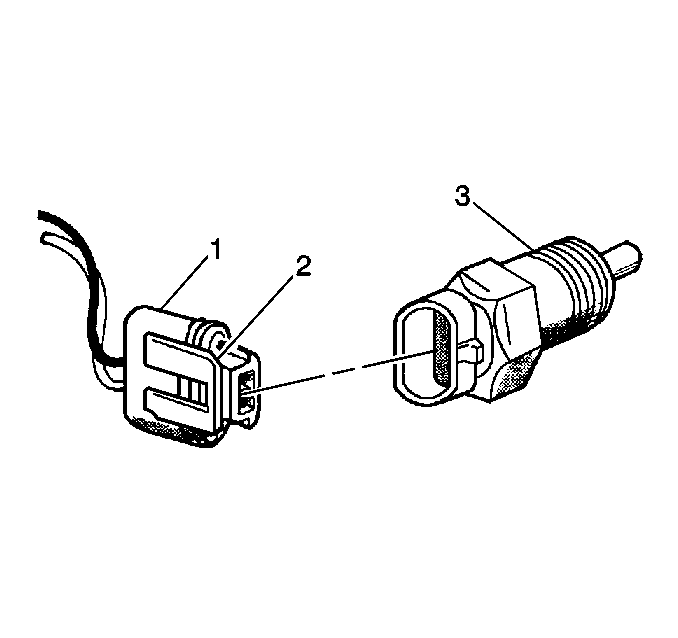The Intake Air Temperature (IAT) sensor is a thermistor
which changes value based on the temperature of air entering the engine. Low
temperature produces a high resistance, 100,000 ohms
at -38°C (-39°F). A high temperature causes
low resistance, 70 ohms at 130°C (266°F). The
PCM supplies a 5.0 volt signal to the sensor through a resistor
in the PCM and measures the voltage. The voltage will be high
when the incoming air is cold, and low when the air is hot.
The PCM calculates the incoming air temperature by measuring
the IAT voltage. The IAT sensor signal is used to adjust spark
timing according to incoming air density.
The scan tool displays the temperature of the air entering the engine,
which should be close to ambient air temperature when the engine is cold.
The temperature should rise as underhood temperature increases.
The engine coolant temperature and intake air temperature parameter
displays should be close to each other if the engine has not
been run for several hours (overnight).
The following DTCs set when the PCM detects a malfunction
in the IAT sensor circuit:
Specifications contains a table to check for sensor resistance values
relative to temperature.
The Manifold Absolute Pressure (MAP) sensor (1) responds
to changes in the intake manifold pressure. The pressure changes as a result
of engine load and speed. The map sensor converts this to a
voltage output.
A closed throttle on engine coast down produces a relatively low MAP
output voltage. A wide open throttle produces a high MAP output voltage. This
high output voltage is produced because the pressure inside
the manifold is the same as outside the manifold. The MAP is
inversely proportional to what is measured on a vacuum gauge.
The MAP sensor is used for the following:
DTC P0107 MAP Sensor Circuit Low Voltage or DTC P0108 MAP Sensor Circuit
High Voltage set when the PCM detects a malfunction in the MAP sensor circuit.

